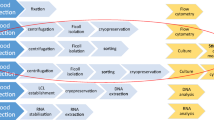Abstract
Based on the uncertain conditions such as uncertainty in blood demand and facility disruptions, and also, due to the uncertain nature of blood products such as perishable lifetime, distinct blood groups, and ABO-Rh(D) compatibility and priority rules among these groups, this paper aims to contribute blood supply chains under uncertainty. In this respect, this paper develops a bi-objective two-stage stochastic programming model for managing a red blood cells supply chain that observes above-mentioned issues. This model determines the optimum location-allocation and inventory management decisions and aims to minimize the total cost of the supply chain includes fixed costs, operating costs, inventory holding costs, wastage costs, and transportation costs along with minimizing the substitution levels to provide safer blood transfusion services. To handle the uncertainty of the blood supply chain environment, a robust optimization approach is devised to tackle the uncertainty of parameters, and the TH method is utilized to make the bi-objective model solvable. Then, a real case study of Mashhad city, in Iran, is implemented to demonstrate the model practicality as well as its solution approaches, and finally, the computational results are presented and discussed. Further, the impacts of the different parameters on the results are analyzed which help the decision makers to select the value of the parameters more accurately.
















Similar content being viewed by others
References
Abdelwahed Khalifa H (2018) Study on multi-objective nonlinear programming in optimization of the rough interval constraints. Int J Ind Eng Prod Res 29(4):407–413
Abdulwahab U, Wahab M (2014) Approximate dynamic programming modeling for a typical blood platelet bank. Comput Ind Eng 78:259–270
Aghezzaf E, Sitompul C, Najid NM (2010) Models for robust tactical planning in multi-stage production systems with uncertain demands. Comput Oper Res 37(5):880–889
Arvan M, Tavakoli-Moghadam R, Abdollahi M (2015) Designing a bi-objective and multi-product supply chain network for the supply of blood. Uncertain Supply Chain Manag 3(1):57–68
Avila-Torres P, Caballero R, Litvinchev I, Lopez-Irarragorri F, Vasant P (2017) The urban transport planning with uncertainty in demand and travel time: a comparison of two defuzzification methods. J Ambient Intell Humaniz Comput 9(3):843–856
Bashiri M, Shiri M, Bakhtiarifar MH (2015) A robust desirability-based approach to optimizing multiple correlated responses. Int J Ind Eng Prod Res 26(2):119–128
Beliën J, Forcé H (2012) Supply chain management of blood products: a literature review. Eur J Oper Res 217:1–6
Cheraghi S, Hosseini-Motlagh S (2018) Responsive and reliable injured-oriented blood supply chain for disaster relief: a real case study. Ann Oper Res. https://doi.org/10.1007/s10479-018-3050-5
Cheraghi S, Hosseini-Motlagh SM, Ghatreh Samani M (2017) Integrated planning for blood platelet production: a robust optimization approach. J Ind Syst Eng 10(special issue on healthcare):55–80
Dillon M, Oliveira F, Abbasi B (2017) A two-stage stochastic programming model for inventory management in the blood supply chain. Int J Prod Econ 187:27–41
Duan Q, Liao TW (2014) Optimization of blood supply chain with shortened shelf lives and ABO compatibility. Int J Prod Econ 153:113–129
Ensafian H, Yaghoubi S, Yazdi MM (2017) Raising quality and safety of platelet transfusion services in a patient-based integrated supply chain under uncertainty. Comput Chem Eng 106:355–372
Fahimnia B, Jabbarzadeh A, Ghavamifar A, Bell M (2017) Supply chain design for efficient and effective blood supply in disasters. Int J Prod Econ 183:700–709
Ghatreh Samani M, Hosseini-Motlagh SM (2017) A hybrid algorithm for a two-echelon location-routing problem with simultaneous pickup and delivery under fuzzy demand. Int J Transp Eng 5(1):59–85
Gunpinar S, Centeno G (2015) Stochastic integer programming models for reducing wastages and shortages of blood products at hospitals. Comput Oper Res 54:129–141
Hamdan B, Diabat A (2019) A two-stage multi-echelon stochastic blood supply chain problem. Comput Oper Res 101:130–143
Hatefi S, Jolai F (2014) Robust and reliable forward–reverse logistics network design under demand uncertainty and facility disruptions. Appl Math Model 38(9–10):2630–2647
Hillyer CD (2007) Blood banking and transfusion medicine: Basic principles and practice. Churchhill Livingstone, Philadelphia
Hosseini-Motlagh SM, Cheraghi S, Ghatreh Samani M (2016) A robust optimization model for blood supply chain network design. Int J Ind Eng Prod Res 27(4):425–444
Jabbarzadeh A, Fahimnia B, Seuring S (2014) Dynamic supply chain network design for the supply of blood in disasters: a robust model with real world application. Transp Res Part E Logist Transp Rev 70:225–244
Khalilpourazari S, Khamseh AA (2017) Bi-objective emergency blood supply chain network design in earthquake considering earthquake magnitude: a comprehensive study with real world application. Ann Oper Res. https://doi.org/10.1007/s10479-017-2588-y
Khan ZA, Zafar A, Javaid S, Aslam S, Rahim MH, Javaid N (2019) Hybrid meta-heuristic optimization based home energy management system in smart grid. J Ambient Intell Humaniz Comput. https://doi.org/10.1007/s12652-018-01169-y
King KE, Bandarenko N (2014) Blood transfusion therapy: a physicians handbook. AABB, Bethesda
Liu S, Zhang DG, Liu XH, Zhang T, Gao JX, Cui YY (2019) Dynamic analysis for the average shortest path length of mobile ad hoc networks under random failure scenarios. IEEE Access 7:21343–21358
Lowalekar H, Ravichandran N (2010) Model for blood collections management. Transfusion 50(12pt2):2778–2784
Managing blood and blood product inventory (2014) Guidelines for Australian health providers. National Blood Authority, Canberra
Mokryani G, Siano P, Piccolo A (2012) Optimal allocation of wind turbines in microgrids by using genetic algorithm. J Ambient Intell Humaniz Comput 4(6):613–619
Nagurney A, Masoumi AH, Yu M (2012) Supply chain network operations management of a blood banking system with cost and risk minimization. CMS 9(2):205–231
Osorio AF, Brailsford SC, Smith HK (2015) A structured review of quantitative models in the blood supply chain: a taxonomic framework for decision-making. Int J Prod Res 53(24):7191–7212
Pierskalla WP (2005) Supply chain management of blood banks. In: Brandeau ML, Sainfort F, Pierskalla WP (eds) Operations research and health care. International series in operations research & management science, vol 70. Springer, Boston, MA. https://doi.org/10.1007/1-4020-8066-2_5
Rao GH, Eastlund T, Jagannathan L (2006) Handbook of blood banking and transfusion medicine. Jaypee Brothers Medical, New Delhi
Samani MR, Hosseini-Motlagh S (2018) An enhanced procedure for managing blood supply chain under disruptions and uncertainties. Ann Oper Res. https://doi.org/10.1007/s10479-018-2873-4
Samani MR, Torabi SA, Hosseini-Motlagh S (2018) Integrated blood supply chain planning for disaster relief. Int J Disaster Risk Reduct 27:168–188
Samani MR, Hosseini-Motlagh S, Ghannadpour SF (2019) A multilateral perspective towards blood network design in an uncertain environment: methodology and implementation. Comput Ind Eng 130:450–471
Torabi S, Hassini E (2008) An interactive possibilistic programming approach for multiple objective supply chain master planning. Fuzzy Sets Syst 159(2):193–214
Van Dijk NV, Haijema R, Wal JV, Sibinga CS (2009) Blood platelet production: a novel approach for practical optimization. Transfusion 49(3):411–420
Wang J, Zhong C, Zhou Y, Zhou Y (2014) Multiobjective optimization algorithm with objective-wise learning for continuous multiobjective problems. J Ambient Intell Humaniz Comput 6(5):571–585
Wendel J, ODonohue WT, Serratt TD (2018) Understanding healthcare economics managing your career in an evolving healthcare system. Taylor & Francis, Boca Raton
Zahiri B, Pishvaee MS (2017) Blood supply chain network design considering blood group compatibility under uncertainty. Int J Prod Res 55(7):2013–2033
Zahiri B, Torabi S, Mousazadeh M, Mansouri S (2015) Blood collection management: methodology and application. Appl Math Model 39(23–24):7680–7696
Zahiri B, Torabi SA, Mohammadi M, Aghabegloo M (2018) A multi-stage stochastic programming approach for blood supply chain planning. Comput Ind Eng 122:1–14
Zhang D (2010) A new approach and system for attentive mobile learning based on seamless migration. Appl Intell 36(1):75–89
Zhang D, Zhang X (2012) Design and implementation of embedded un-interruptible power supply system (EUPSS) for web-based mobile application. Enterp Inf Syst 6(4):473–489
Zhang D, Zhu Y, Zhao C, Dai W (2012) A new constructing approach for a weighted topology of wireless sensor networks based on local-world theory for the Internet of Things (IOT). Comput Math Appl 64(5):1044–1055
Zhang D, Wang X, Song X, Zhao D (2014a) A novel approach to mapped correlation of ID for RFID anti-collision. IEEE Trans Serv Comput 7(4):741–748
Zhang D, Zheng K, Zhang T, Wang X (2014b) A novel multicast routing method with minimum transmission for WSN of cloud computing service. Soft Comput 19(7):1817–1827
Zhang D, Zheng K, Zhao D, Song X, Wang X (2015a) Novel quick start (QS) method for optimization of TCP. Wirel Netw 22(1):211–222
Zhang D, Song X, Wang X, Ma Y (2015b) Extended AODV routing method based on distributed minimum transmission (DMT) for WSN. AEU Int J Electron Commun 69(1):371–381
Zhang D, Wang X, Song X (2015c) New medical image fusion approach with coding based on SCD in wireless sensor network. J Electr Eng Technol 10(6):2384–2392
Zhang D, Niu H, Liu S (2016) Novel PEECR-based clustering routing approach. Soft Comput 21(24):7313–7323
Zhang D, Liu S, Zhang T, Liang Z (2017a) Novel unequal clustering routing protocol considering energy balancing based on network partition & distance for mobile education. J Netw Comput Appl 88:1–9
Zhang D, Zhou S, Tang Y (2017b) A low duty cycle efficient MAC protocol based on self-adaption and predictive strategy. Mob Netw Appl 23(4):828–839
Zhang C, Du Z, Cai Q, Yu L, Li Z, Bai Y (2018a) Assignment optimization of pandemic inluenza antiviral drugs in urban pharmacies. J Ambient Intell Humaniz Comput. https://doi.org/10.1007/s12652-018-0872-6
Zhang D, Chen C, Cui Y, Zhang T (2018b) New method of energy efficient subcarrier allocation based on evolutionary game theory. Mobile Netw Appl. https://doi.org/10.1007/s11036-018-1123-y
Zhang D, Ge H, Zhang T, Cui YY, Liu X, Mao G (2018c) New multihop clustering algorithm for vehicular ad hoc networkss. IEEE Trans Intell Transp Syst 99:1–14. https://doi.org/10.1109/TITS.2018.2853165
Zhang D, Liu S, Liu X, Zhang T, Cui Y (2018d) Novel dynamic source routing protocol (DSR) based on genetic algorithm-bacterial foraging optimization (GA-BFO). Int J Commun Syst 31(18):e3824. https://doi.org/10.1002/dac.3824
Zhang D, Zhang T, Liu X (2018e) Novel self-adaptive routing service algorithm for application in VANET. Appl Intell 49(5):1866–1879. https://doi.org/10.1007/s10489-018-1368-y
Zhang D, Zhang T, Zhang J, Dong Y, Zhang X (2018f) A kind of effective data aggregating method based on compressive sensing for wireless sensor network. EURASIP J Wirel Commun Network 2018(1):159. https://doi.org/10.1186/s13638-018-1176-4
Zhang DG, Zhang T, Dong Y, Liu XH, Cui YY, Zhao DX (2018g) Novel optimized link state routing protocol based on quantum genetic strategy for mobile learning. J Netw Comput Appl 122:37–49. https://doi.org/10.1016/j.jnca.2018.07.018
Zhang D, Gao J, Liu X, Zhang T, Zhao D (2019) Novel approach of distributed & adaptive trust metrics for MANET. Wirel Netw. https://doi.org/10.1007/s11276-019-01955-2
Author information
Authors and Affiliations
Corresponding author
Additional information
Publisher's Note
Springer Nature remains neutral with regard to jurisdictional claims in published maps and institutional affiliations.
Rights and permissions
About this article
Cite this article
Hosseini-Motlagh, SM., Samani, M.R.G. & Homaei, S. Blood supply chain management: robust optimization, disruption risk, and blood group compatibility (a real-life case). J Ambient Intell Human Comput 11, 1085–1104 (2020). https://doi.org/10.1007/s12652-019-01315-0
Received:
Accepted:
Published:
Issue Date:
DOI: https://doi.org/10.1007/s12652-019-01315-0




